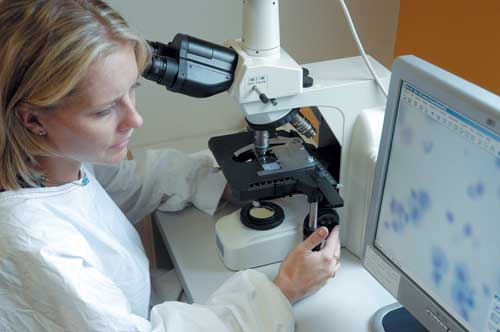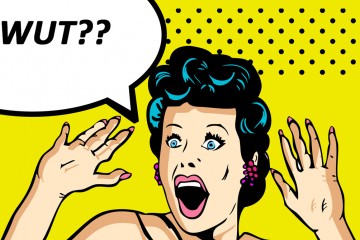Do We Need Large-Scale Randomized Double Blind Clinical Trials for Medical Cannabis?

Here is a great editorial by Judith Stamps which addresses something we are hearing often today – the “lack of clinical trials” that demonstrate the effectiveness of marijuana as medicine and proposes that the large-scale trial mentality is wrong for cannabis.
If you’ve been following current events on medical cannabis, you will have heard its critics claim there have been no clinical trials to demonstrate it usefulness. The critics include, to name a few, the President of the Canadian Medical Association; the Canadian Minister of Health; the Director of the National Institute for Drug Abuse, the FDA and the National Institutes of Health in the US, and medical authorities in England and Wales. The news media carry stories on the subject daily and, whilst some are sympathetic to patients seeking remedies, nearly all echo the above on the lack of scientific evidence, also called ‘hard evidence.’
Clinical trials are experiments conducted by researchers to answer a question about the usefulness of a proposed treatment. The largest ones are conducted in 3 phases: phase I with 30-40 subjects; phase II with 80-100 subjects; and phase III with 1,000-3,000 subjects. The treatment is tested against an older medicine, a placebo, or both. Hardest of hard evidence is said to come from randomized double blind trials, in which subjects are assigned in random fashion to receive new med, old med, or placebo, where neither the subject nor administering clinician knows which of these any subject is getting. Trials can take 6-8 or more years to complete. Governments or private research groups can sponsor these, but pharmaceutical or biotech companies do most of this work. That’s because trials on this scale cost anywhere from $12,000,000 to $300,000,000.
The charge that there are no double blind studies on cannabis has become a silly meme amongst medical authorities and journalists. You will hear dissenting voices if you listen, but that is precisely what health authorities and news agencies don’t do. So for the record, you can Google ‘double blind studies on cannabis,’ and find the following:
http://medicalmarijuana.procon.org/view.resource.php?resourceID=000884
They do not have 1,000-3,000 subjects. They have 30-150. But the methods are rigorous, and the results are meaningful.
There are also peer-reviewed studies. Sites listing clinical studies in general include PubMed; ProCon.Org; NORML; Illegally Healed; the National Cancer Institute; Patients Out of Time; and the Multi-disciplinary Association for Psychedelic Studies (MAPS).
Then there are patients’ anecdotes, and familiarity with these by medical cannabis dispensary directors who meet patients daily. You’ll have heard experts scoff at small studies and anecdotes. Well, here’s why you should scoff back.
Large randomized double blind clinical studies are said to be the “gold standard” in achieving certainty. They are not. Consider the following.
- People who sign up for such studies, let’s say, on MS, are not necessarily representative of MS sufferers. They may have especially severe symptoms. They may be atypically outgoing, or atypically intense, and some of these qualities may affect their illness, or the trial drug. Results of such studies may not apply to MS sufferers generally.
- People who wish to be part of a study may not agree to be assigned randomly. If they are suffering, or have a life threatening illness, they will want to try the real stuff. Those who are willing may not be typical—see point 1. It can be impossible to find enough subjects who agree to randomization to fill a large study.
- The ‘double blind status’ cannot always be maintained. If being tested for drugs meant to lower blood cholesterol, randomized subjects will not know what they are receiving. Cholesterol levels are not palpable, and take 3 months to show change. Pain, spasticity, seizures, nausea, sleeplessness, appetite, and mood, on the other hand, are palpable, and the effects of cannabis oil on these are almost immediate. Subjects receiving this medicine will know about it very soon. One can test cannabis against other drugs, but as its effects are unique, they may be hard to mistake.
- It is not always ethical to give subjects older pharmaceuticals. Consider the youngsters being treated today for epilepsy, many of whose lives are in danger. The conventional drugs are not working for them, so giving half of them older treatments is absurd. Trials for the effects of CBD rich cannabis on children’s seizures currently in progress at hospitals throughout the US give cannabis to every subject. And those trials have about 150 subjects.
- Large scale studies do not always reveal side effects. That’s because subjects do not always report them. When Selective Serotonin Re-Uptake Inhibitors like Prozac and Paxil were being tested, test subjects did not report loss of libido. But we now know that this is a major side effect.
- Large scale drug trials that fail to produce a desired effect may never get published. Large sponsors don’t like to see them published, and have been known to suppress publication. With this data missing, subsequent meta-analyses become skewed.
- Subjects drop out of trials. They get discouraged because of poor results, or cannot tolerate a side effect, or just get fed up with the time commitment. Drop out rates can be as high as 30%.
- Researchers do not always know what demographic controls to apply. Should they record what foods subjects like? Or if they like coffee? Or chocolate? Who knows what they could be missing?
- No matter how large and expensive a study is, it will never tell you if the medicine being studied will help you. No medicine is universally effective. Studies demonstrate what percent of people are helped by a medicine, and you may fall outside that percentage group. From that perspective they are not much better to you than anecdotes.
- The larger the study the easier it is to fiddle the overall numbers, and to obscure quirky, individual responses to a drug.
- Randomized clinical trials date only from 1946. So aspirin, barbiturates, and penicillin were never tested in this manner. Yet everyone knew that they were effective.
The large-scale trial mentality is wrong for cannabis. This fact is well demonstrated by a recent Globe and Mail interview with Chris Simpson, president of the Canadian Medical Association. History, he said, has seen many prospective medicines that have turned out to be disappointing or even dangerous when “subjected to the rigours of science.” That statement makes sense if you are thinking about a new medicine. But cannabis is not a new medicine. To quote Lester Grinspoon, it has been used for thousands of years by millions of people. If you compare lists of illnesses for which cannabis is effective, you will see that those found in ancient formularies are remarkably like the lists we see today. Calling cannabis an Investigational New Drug (IND), as it is sometimes categorized, just muddies up our perception of it.
In sum, it makes little sense for medical cannabis advocates to knock themselves out trying to fund expensive large-scale randomized clinical trials. The smaller scale studies being conducted by the groups listed above, given time, will translate cumulatively into larger ones. Even individual anecdotes collected over time will give us large numbers. Small studies and anecdotes are good.
On this note, I leave today’s discussion with one last thought. In the 1970s and 80s, cancer patients and AIDS patients who liked cannabis recreationally were the ones who first noticed its healing effects. Their anecdotes are why, in recent history, we know about these effects at all. It is reasonable to think that medical applications of cannabis known to earlier generations were discovered in a similar manner. Thus from the historical standpoint, the much-trumpeted distinction between recreational and medicinal usage falls apart. What does this mean? It means that from no perspective is cannabis like the substances usually subjected to large-scale randomized double blind studies. It’s an ancient plant. If researchers respect this fact they will study it sensibly. If they don’t, they will find themselves wasting a lot of time and money.
Article by: Judith Stamps
Source: Cannabis Digest





No Comment